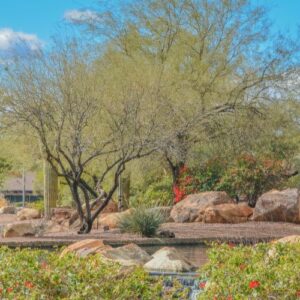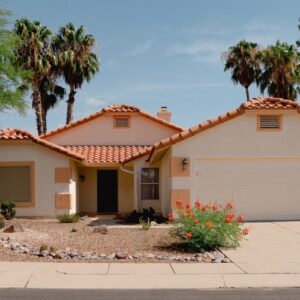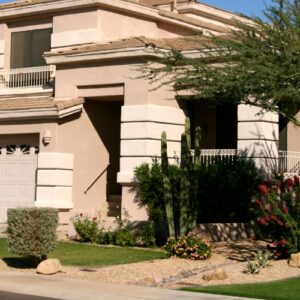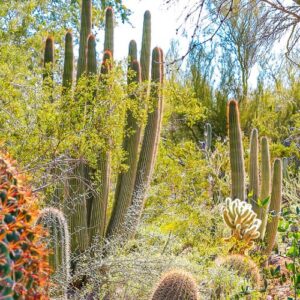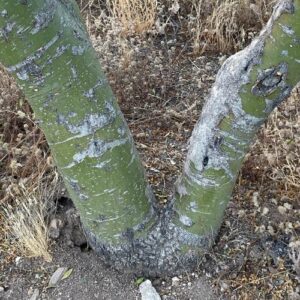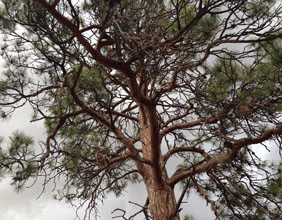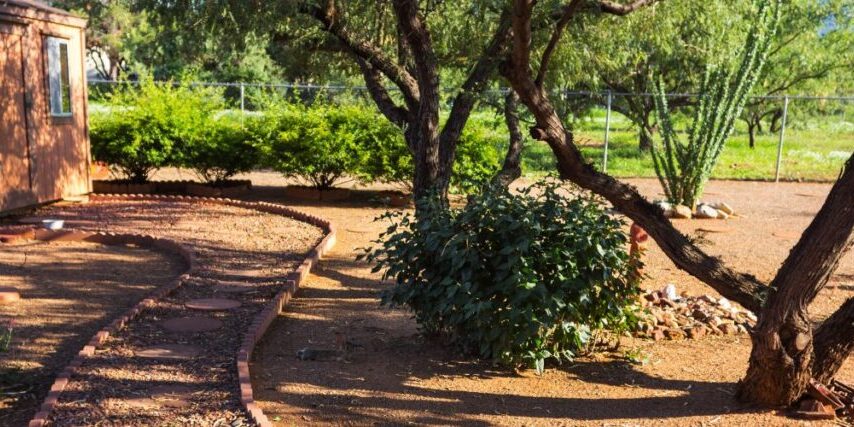
Previously, we wrote about how the Urban Heat Island effect is causing temperatures to rise in the greater Phoenix area continually, but this month, we’re focusing on the climate on your own property, specifically microclimates.
Microclimates are the climate conditions of small areas, such as a neighborhood or even different sections of your yard.
Learn how knowing your property’s microclimate(s) can better help you choose what to plant in your yard, how to maintain your trees and plants, and why some plants may not have survived.
What is a Microclimate?
A microclimate is a small area with differences in temperature, humidity, elevation, wind exposure, evaporation, sunlight, soil composition, etc.
Your property might have a different microclimate than surrounding areas. Suppose you notice that the temperature on your property is consistently different than the temperature provided as the local temperature. In that case, that’s a good sign that your yard has its own microclimate.
You might also have different microclimates on your property. Some areas might receive more full sun, others might have higher humidity, and high winds might impact others.
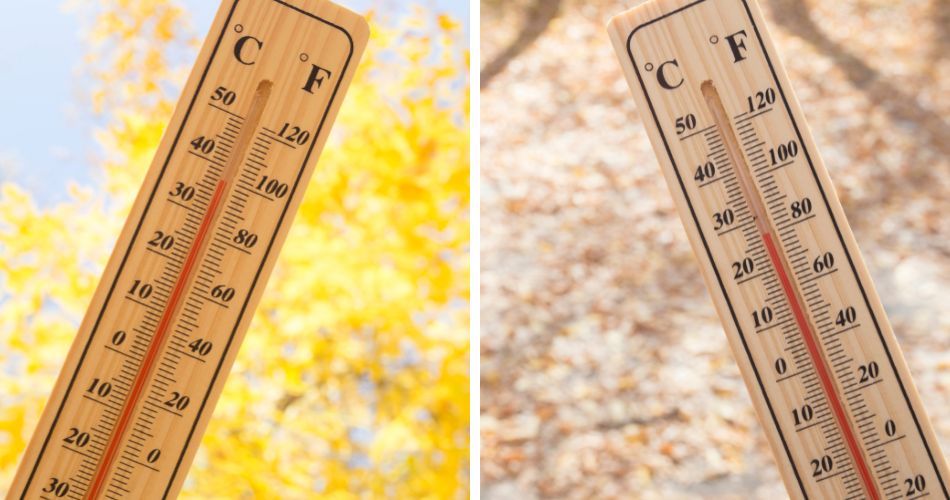
What Creates Microclimates?
Just as asphalt and paved surfaces add to the heat island effect, those same things can increase the temperature on your property. Similarly, the amount of plant life, the number of shade trees, and even an irrigation system can influence the microclimates on your property.
Other things include:
Sun – the direction and intensity of the sunlight and how it shines on your property
Shade – Structures, plants, and trees impact shade and create wind blocks.
Block walls – Walls absorb and radiate heat and work as a wind block
Topography (where the land is not level) – Moisture can settle in lower areas more, impacting humidity and how much water specific plants receive. Elevation also affects climate and growing conditions.
Ground – Bare soil, rocks, mulch, etc., can change the surrounding temperature. Rocks raise the temperature, while organic mulch is more insulating (it’s cooler in summer and warmer in winter)
Learn more about the differences between wood mulch and rocks
Water features – Fountains, ponds, pools, or other water features raise the humidity in the immediate area and often cool the temperature. If you are near a body of water, your property might be cooler than other properties further away from the water.
Time of year – Temperature, the direction of the sun, the amount of sunlight each day, the type of weather to expect, and more all change throughout the year.
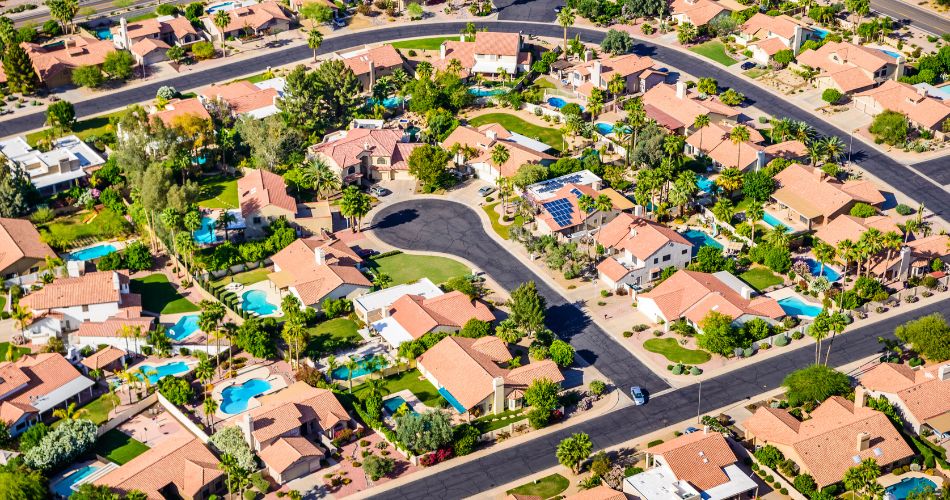
How Urban Heat Islands and Microclimates Are Related
This story about microclimates on the University of Arizona campus was summed up well when Mark Novak, a landscape architect, said, “If we just had a lot of buildings with a lot of mass that create heat, we would get an ‘urban heat island’ effect. If we can mitigate that with the proper amount of landscape, which helps cool things down, then we have a healthy, sustainable microclimate environment.”
Despite news of the Phoenix area being impacted by the Urban Heat Island effect, you can make some changes to control the climate on your property.
See how one Phoenix-area gardener used their microclimates to plan their garden in this video
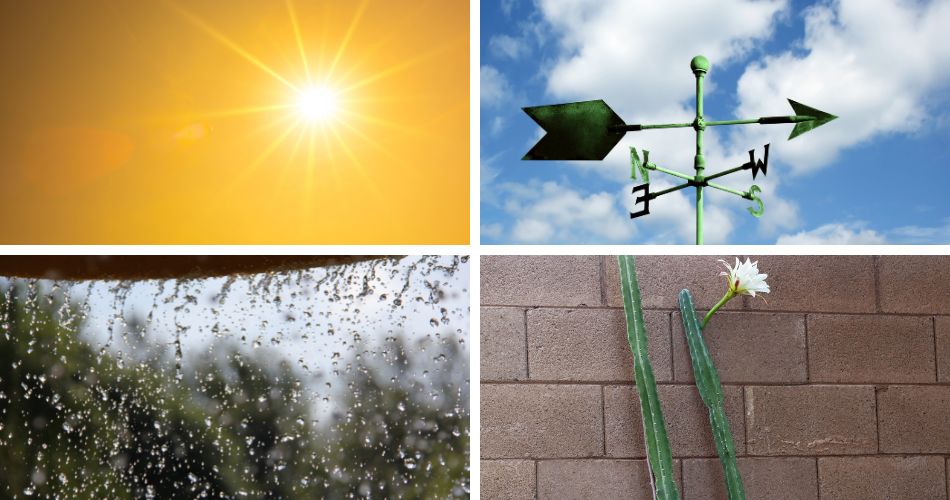
How to Find Microclimates on Your Property
There are ways to find the microclimates in your yard, but it will take some time, observation skills, and patience. Below are the steps you can take to learn more about your yard and garden.
1. Check the Sunlight
Each single-residence property has at least four microclimates: one on each side of the house.
The first thing to check is which direction each part of your yard faces: north, south, east, or west. Not every house faces an exact direction (e.g., it may face northwest rather than true north), so figure out an approximate direction. The sides that face south and west receive the most sunlight.
Most houses have more than four sides, so count how many potential microclimates are created just by the exterior walls of your home.
Next, notice anything that creates shade. Note that something that is in bright sunlight in the morning may be in shadow in the afternoon. As the sun moves during the year, different areas of your yard will be in the sunlight. Make a note of all these things.
2. Watch the Rainwater
If and when it rains, note where the water falls and where it flows. Plants under an overhang may not get direct rain, or sides of the house that receive a lot of wind will not get rain that falls straight down.
Note which areas of your yard receive a lot of water and which remain predominantly dry. Slopes, berms, and hardscaping can impact the flow of water.
3. Observe the Wind
Check how much wind certain parts of your yard receive. Those areas with more sunlight and wind are best for plants that don’t require much moisture, as sunlight and wind can be drying.
Walls, fences, buildings, or plants can create windbreaks. Note if you have windbreaks on your property where the wind is blocked or redirected.
4. Check for Other Things That Create Microclimates
Walk your property and note anything that casts shade, including trees, walls, sections of buildings, neighboring objects, etc.
If you have a wall around your property, that can impact your plants. White walls can reflect sunlight, creating a warmer microclimate, but as mentioned above, they can also act as a windbreak.
If you want, you can carefully check the soil type in different parts of your yard. For example, if you have any caliche, it will be harder to dig or plant in that area. You can do a soil test to get even more detailed information on your soil composition. Remember to call before you dig to prevent damage to any power lines, irrigation hoses, or water pipes.
Make a note of any differences that you notice in different spots in your yard. Check for temperature changes (e.g., when you walk under a shade structure), humidity (especially if you have any water features or are close to a body of water), and wind.
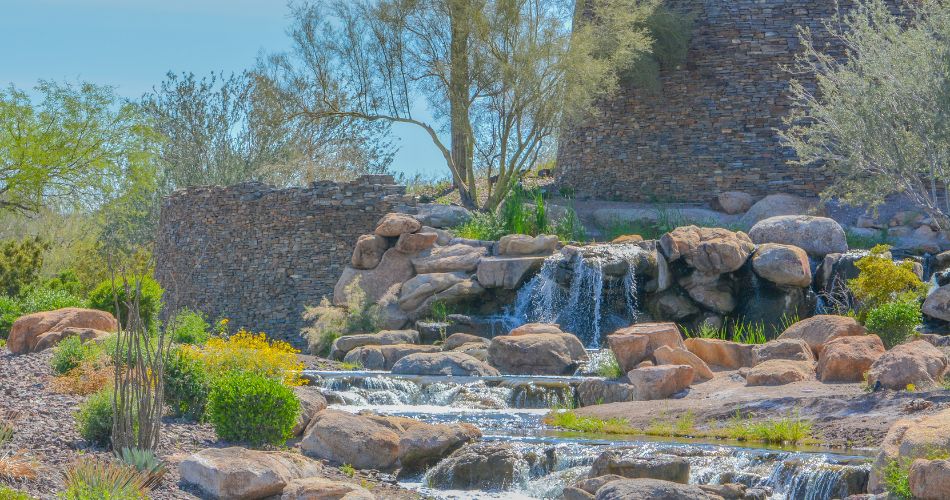
How to Use Microclimates in Your Phoenix-Area Yard
Once you understand the different microclimates on your property and how to create new ones, your plants and trees have a much better chance of surviving.
Create New Microclimates To Lower Temperatures and Increase Growing Options
There will always be hot summer days here in the Phoenix and Anthem areas, but you can make minor changes to create microclimates and control some of the temperature, humidity, and shade on your property.
Consider:
- Using organic wood mulch to regulate ground temperatures and provide organic matter
- Adding water features, misters, or irrigation systems to keep your humidity higher and your plants well-watered
- Planting more trees, plants, and vines. They can be used to create shade, block the wind, reduce the brightness of a wall, trap moisture, shade other plants, and keep temperatures lower
- Install shade structures or use shade cloth to reduce the sunlight in specific spots where you want to grow plants that require protection from the sun
Here are some examples of how to decrease temperatures by creating microclimates >>
Choose Plants That Will Thrive in Your Unique Microclimates
You might have noted that one corner of your yard gets a lot of sunlight but little rainfall. It would be best to look for a tree or plant (or possibly a cactus) that thrives in full sun and doesn’t need much extra irrigation once established.
Look for plants and trees that will thrive in the conditions that you have identified on your property. Most plants in a nursery will have details on their sunlight and water requirements (although those are often written for different parts of the country). Many resources online allow you to determine if a specific plant or tree would work in your microclimates.
You can also take advantage of your microclimates with container gardening. Planting in containers rather than the ground gives you an extra pop of color or interest and allows you to move the containers when needed.
As this article from Fine Gardening points out, courtyards are often an ideal spot for container gardening in the Southwest, as they are usually protected from the wind and heat.
Observe Changes in Your Microclimates Over Time
Keep in mind that you can change the microclimates in your yard and that they will naturally evolve over time. For instance, a newly planted tree might cast a lot of shade in three to five years. The plants growing nearby will need to thrive in full or partial shade.
Alternatively, if you remove a tree, the temperature in that section of your yard may increase. The sun exposure will be different for any plants and trees that previously benefited from the tree’s shade.
Titan Tree Care Can Help!
The experts at Titan Tree Care can assist you as you learn more about microclimates and want to make changes to your property.
We can help you plant or transplant trees or shrubs, provide treatment for the trees and plants you already have growing, or prune or remove trees.
We understand the unique soil composition found in the Anthem and North Phoenix areas and can advise you on any soil amendments that may be necessary to improve the soil structure to help your plants thrive.
Contact Titan Tree Care today to learn more about how we can help you improve the health and vitality of your trees and plants.
See Our Latest Articles
More Articles Like This

Titan Tree Care is a full-service tree care company located in Anthem, AZ and serving all of North Phoenix. We offer a wide range of services to meet your tree care needs, including tree and palm trimming, tree pruning, tree removal, stump grinding, and more. We also offer insect or disease treatments and fertilization services. We are dedicated to providing high-quality, safe, and effective tree care services to our customers and work hard to ensure that your trees are healthy and look their best.



